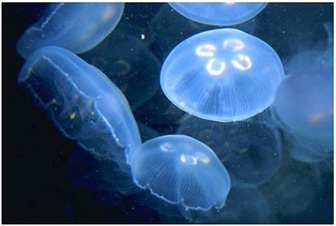Undesirable mass events of jellyfish are observed more and more frequently and are showing up even in places where they had rarely been seen before. Along with many, well-known undesirable side-effects of jellyfish swarms, these organisms can also clog the water-intake valves of coastal power plants’ reactors, jeopardizing effective cooling.
On 21 October, moon jellyfish (Aurelia aurita) about the size of a basketball had covered a great proportion (40 to 80%) of the area on racks used to keep ocean creatures out of the reactor-cooling water of the Diablo Canyon nuclear power station in California . The capacity of two reactor units near the Pacific Ocean in Avila Beach -some 200 miles northwest of Los Angeles- was thereby reduced drastically: Unit 1 (of 1122- megawatt capacity) was reduced to half-power while Unit 2 (of 1118-megawatt capacity) was shut. Divers had cleared away enough jellyfish from ocean water intake racks that officials were "hoping" to ramp up at least toward full power on Wednesday, whereas by Wednesday afternoon, PG&E ( San Francisco ) had no estimate of when Unit 2 could return to operation.
In contrast with other, more complex environmental impact assessments, making an energy/economic-loss estimate of reactor, jellyfish-bloom side effects can be rather straightforward: one megawatt powers about 700 homes in California ! |

Moon jellyfish (Aurelia aurita) swarm.
|



